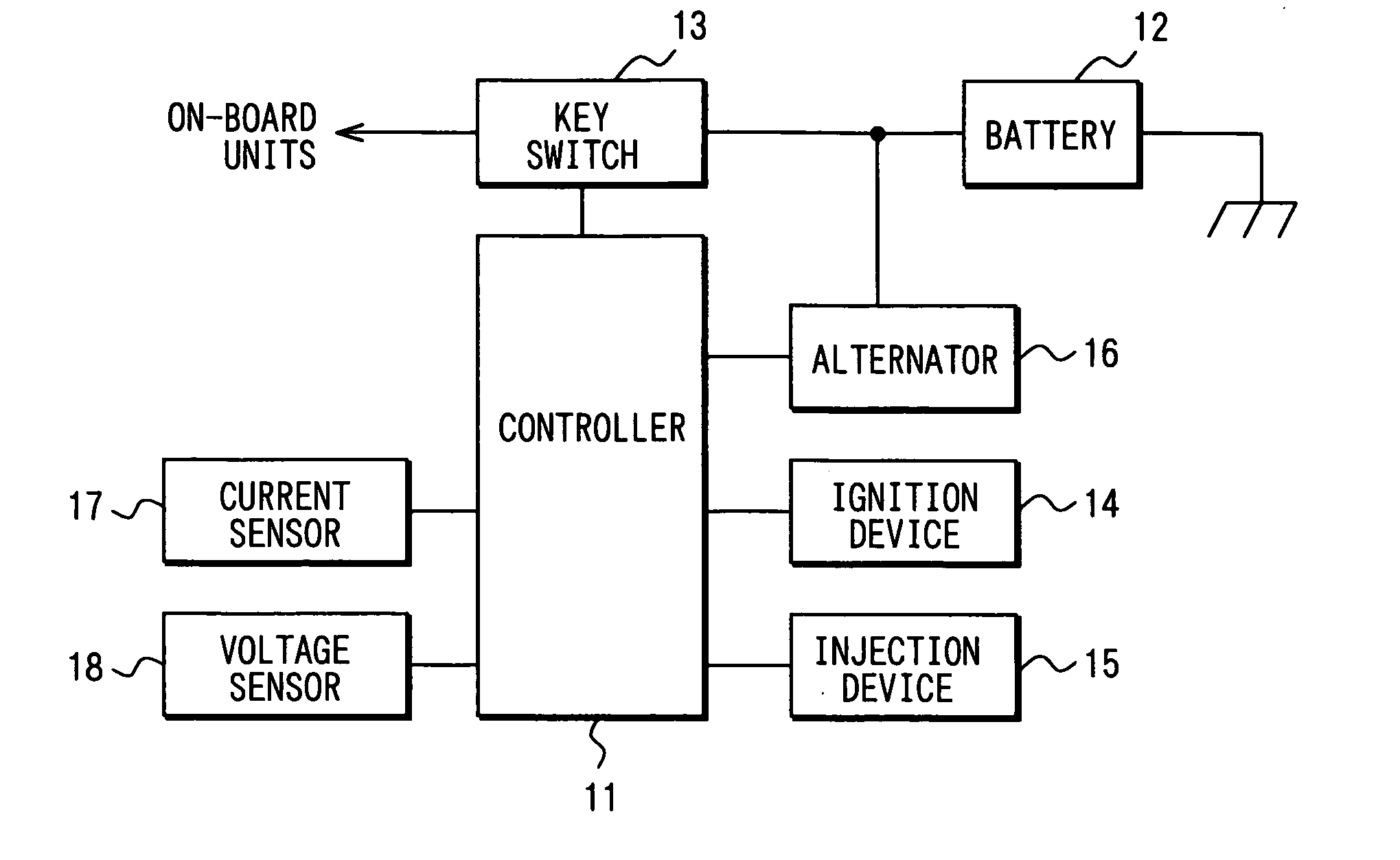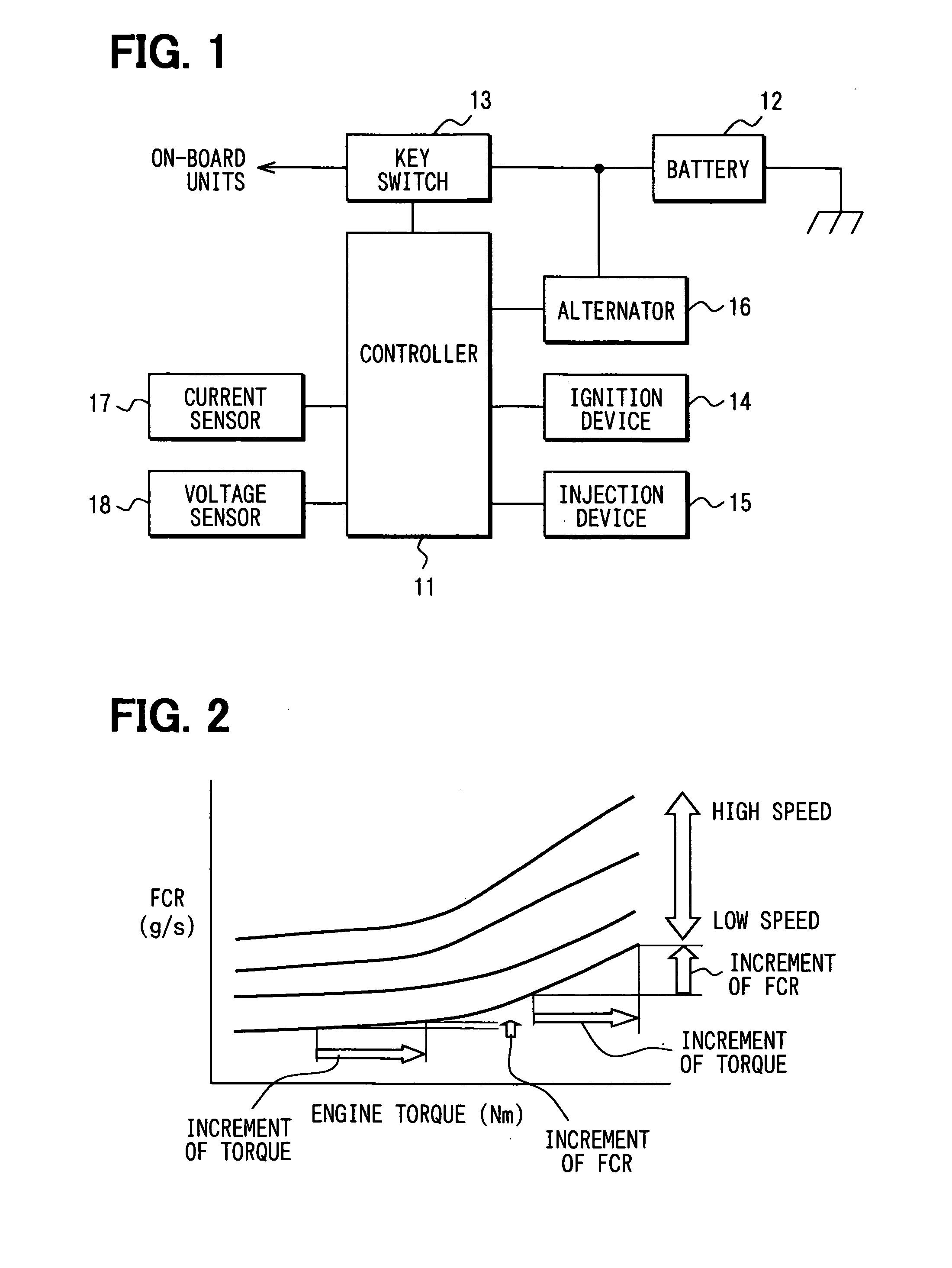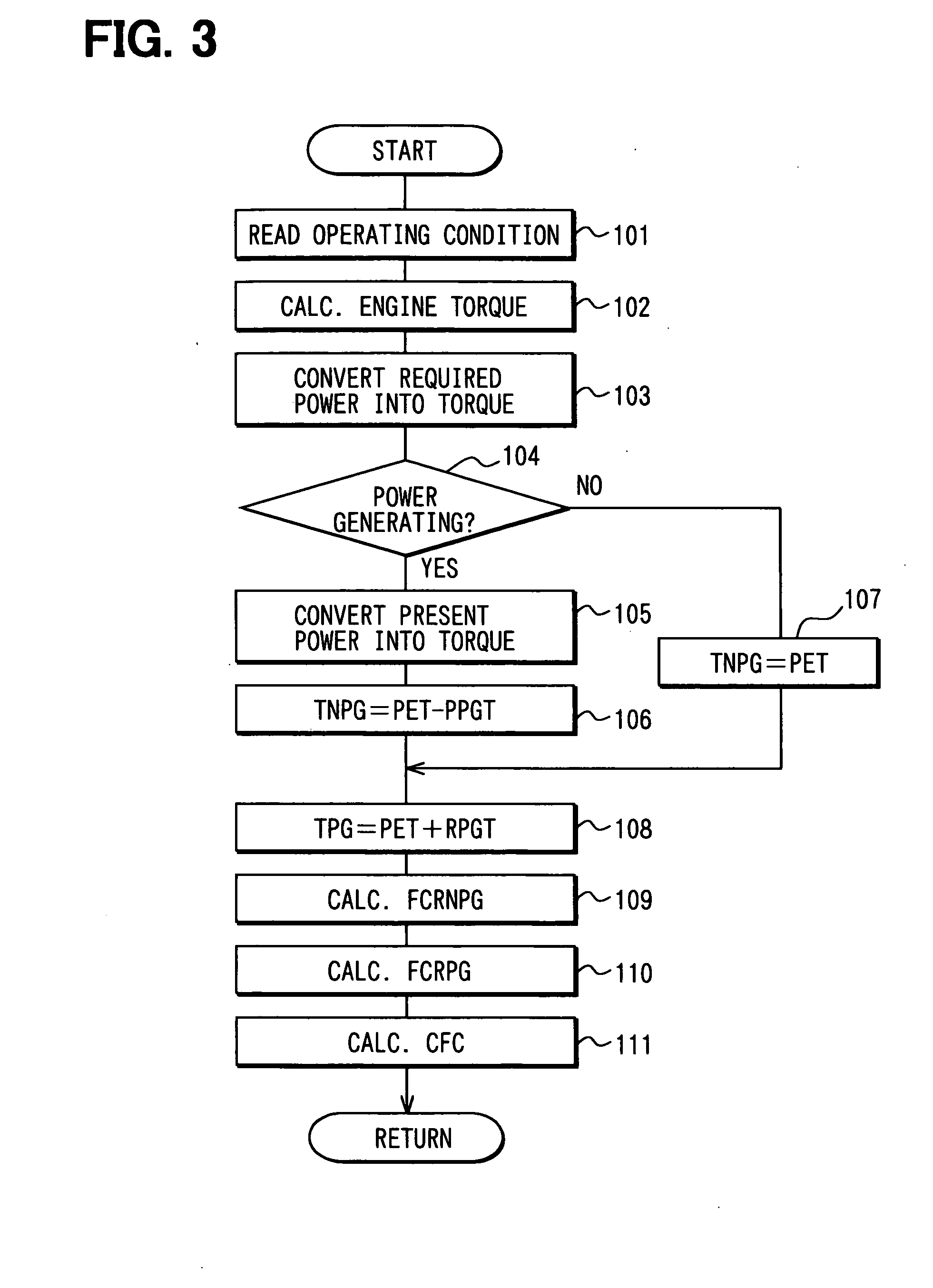Power generation control apparatus for internal combustion engine
a technology of power generation control and internal combustion engine, which is applied in the direction of electric generator control, process and machine control, electric devices, etc., can solve the problem that the above-technology does not necessarily obtain a sufficient fuel saving effect, and achieve the effect of safe reduction of fuel consumption, fuel saving effect, and less influence on map accuracy
- Summary
- Abstract
- Description
- Claims
- Application Information
AI Technical Summary
Benefits of technology
Problems solved by technology
Method used
Image
Examples
first embodiment
[0054] Referring to FIG. 1, a control device 11 serves as power generation means to which a power source is supplied through a battery 12 and a key switch 13 to control operations of an ignition device 14 and an injection device 15 during engine operating and also to control power generation of an alternator 16. Control of the power generation in the first embodiment will be hereinafter described.
[0055] The control device 11 calculated a charge rate SOC of the battery 12 based upon a charging / discharging current of the battery 12 detected by a current sensor 17 (current detector) and / or an open terminal voltage of the battery 12 detected by a voltage sensor 18 (voltage detector). For example, the control device 11 detects the charging / discharging current of the battery 12 with the current sensor 17 (current detector) and integrates the detection values. On this occasion, a charging current of the battery 12 is set as a plus value and a discharging current of the battery 12 is set a...
second embodiment
[0094] The calculating routine for the electric consumption, the accumulating routine for the electric consumption, the calculating routine for the electric consumption class data, the calculating routine for the average consumption power and the calculating routine for the target electric consumption, similar to the first embodiment are executed. Thereafter, the following routine is executed.
[0095] [Calculating Routine for Correction Amount of Target Electric Consumption]
[0096] A calculating routine for a correction amount of target electric consumption in FIG. 8 is executed in a predetermined cycle (for example, 8 ms cycle) during engine operating and a correction amount of the target electric consumption TCFCcmp is calculated as follows. When this routine is activated, first at Step 2501, the I term (integral term) correction amount I cmp (i) is calculated according to the following equation for performing feedback correction on the target electric consumption TCFC in such a man...
third embodiment
[0103] In the second embodiment, a reference point of the charge / discharge balance of the battery 12 is set as zero. However, In a third embodiment of the present invention shown in FIGS. 10 and 11, a reference point of the charge / discharge balance of the battery 12 is to be corrected in accordance with a charge / discharging amount required for making the SOC of the battery 12 be equal to a target SOC.
[0104] A calculating routine for a correction amount in the reference point of the charge / discharge balance in FIG. 10 is executed in a predetermined cycle (for example, 8 ms cycle) during engine operating. When this routine is activated, first at Step 2701, a deviation between the present SOC and the target SOC is multiplied by a full charging amount and a battery voltage to calculate a charging / discharging amount required for making the SOC of the battery 12 be equal to the target SOC. The correction amount BALcmp in the reference point of the charge / discharge balance is determined b...
PUM
 Login to View More
Login to View More Abstract
Description
Claims
Application Information
 Login to View More
Login to View More - R&D
- Intellectual Property
- Life Sciences
- Materials
- Tech Scout
- Unparalleled Data Quality
- Higher Quality Content
- 60% Fewer Hallucinations
Browse by: Latest US Patents, China's latest patents, Technical Efficacy Thesaurus, Application Domain, Technology Topic, Popular Technical Reports.
© 2025 PatSnap. All rights reserved.Legal|Privacy policy|Modern Slavery Act Transparency Statement|Sitemap|About US| Contact US: help@patsnap.com



